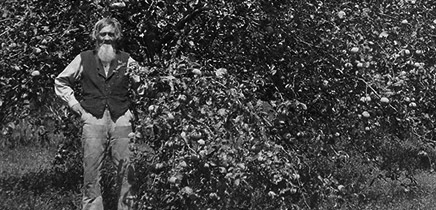About a year ago, I received the Lilly Lorenzen scholorship from the American Swedish Institute in Minneapolis to travel to Sweden to study 19th century farm buildings an properties. The information is to be used to correctly restore the Andrew Peterson farmstead. The $1000 scholorship paid for airfare and renting a car for two weeks. The four weeks off needed for the trip was granted by the CCHS board as part of the move from sick time and vacation time to PTO. So many people have asked to follow my journey, that it was decided to use this forum to keep everyone informed.
Last fall, when I booked my airline ticket to Sweden, it really hit me that I would be gone for four weeks. Having worked with exchange students for many years, I am fully aware that home sickness is real. It something that should be planned for accordingly. With that in mind, I divided my month off into four parts. This blog post will cover the first week. My daughter Virginia, her husband Dave, and my son Dain, accompanied me. We traveled via Iceland Air, and took the airline up on the offer to stop in Iceland for a couple of days, before heading further east. In Iceland we visited the Viking World center, and the Blue Lagoon and several other places that Iceland is known for.
Swedish freelance writer Lars Sonnergren has been writing about me and my coming trip in an agriculture magazine. He offered to meet me, which I was excited to do. The situation however, was that while he had an apartment in Sweden, he would be with his wife Galina in St. Petersburg when I arrived. So, we changed our airline travels to include, after a change of planes in Stockholm, a visit to St. Petersburg to meet Lars and Galina. Galina and Lars were fabulous hosts, showing us around town. On the second day, Lars and I spent some quality time alone. He showed me the Hermitage, then we sat down for lunch and discussed the Peterson Farmstead. He helped me with some of the difficult Peterson diary words and answered some questions I had. Topics that were discussed included what the Swedish word “korn” meant. American corn or something else? We also discussed Peterson’s mention in his diary of painting the roof of the barn after it was installed, if the north barn corners should be painted white, and the different harvesting methods mentiond in the diary. More details about the discussion will be mentioned in follow up bolgs after I return.
After St. Petersburg, we returned to Stockholm. While the kids were with me, we took a Viking history tour of Viking Rune Stones. The next day they left, and I met with Lena Palmqvist at the Nordic Musuem and visited Skansen, the world’s first open air musuem.
The details of my conversations and observations will be forthcoming, but for now I think it is best to say that it could be very correctly stated that what has been learned is that Peterson was a Swede, who imigrated to the US, and as the years passed he became an American whos heritge was Swedish. This can be observed not only in the way his writing and use of words changes over the years, but in how he builds the buildings on his farm, the change in the colors he uses on buildings, the change in floor plan style- from Swedish style to Yankee, his desire to fight in the Civil War, and yes, even in his use of the word korn.
Over the next week, I will be visiting Birka, the first Viking Settlement and a World Heritage Site, spending time in Uppsala at the fabulous museums there, spending time with a old time farmer west of Uppsala, visiting the Fallun copper mines and Dala shop, and the open air musuem Valby.
Pictures and more details will be forth coming, especially regarding the conversations with Lena and Lars.
for now
Wendy


